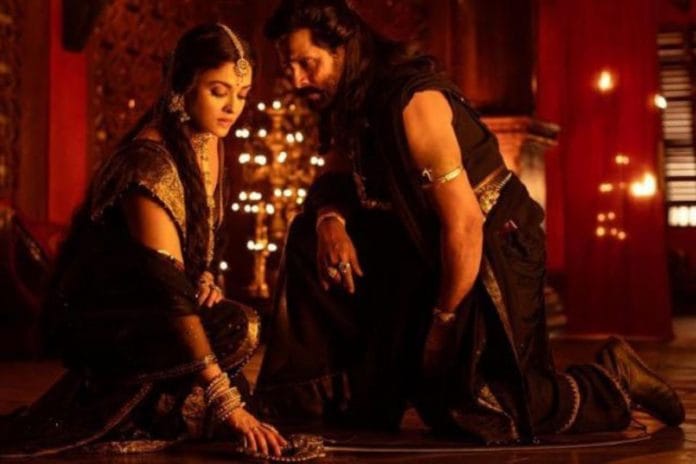If you are a period drama lover, Ponniyin Selvan: II is just what you need this weekend. Seven months after the first instalment’s mega success, Mani Ratnam is back with the sequel to his magnum opus based on Kalki Krishnamurthy’s iconic five-volume Tamil novel, Ponniyin Selvan.
It was heartening to see audiences across age groups, especially senior citizens, queue up outside cinema halls for a morning show—testimony to the books’ grip over Tamil literature enthusiasts.
Those unfamiliar with Krishnamurthy’s seminal work might find the films slightly overwhelming, especially PS:II, because the first part was released a while ago. But all unanswered questions and loose ends come full circle as Ratnam brings his star-studded cast back on the silver screen.
A gripping game of thrones
The film revolves around the intricate power struggle unfolding in and around the Chola empire. The first part ended on a cliffhanger as Arunmozhi Varman, a.k.a. Ponniyin Selvan (Jayam Ravi), and Vallavarayan Vandhiyathevan (Karthi) fell from their ship amid a cyclonic storm. A grey-haired and mute woman named Mandakini came to their rescue. To everyone’s surprise, her face resembled that of Queen Nandini (Aishwarya Rai Bachchan).
Now that most people believe Arunmozhi is dead, conspiracies run amok. Some want to dethrone the illness-stricken king Sundara Cholar (Prakash Raj), while others plot to murder Arunmozhi’s siblings — Aditya Karikalan (Vikram) and Kundhavai (Trisha).
Nandini, married to Sundara’s brother Periya Pazhuvettarayar (Sarathkumar), is on a mission to bring down the Chola empire. Unaware of her parentage and the mysterious identical older woman, Nandini plots to kill Karikalan. As young teenagers, the two professed their love for each other and wanted to marry, but Nandini was thrown out of the kingdom with no regard for Karikalan’s feelings. Later, as shown in the first instalment, Aditya assassinated Pandya king Veera Pandyan (Nasser) in front of Nandini, leaving no scope for reconciliation between the old lovers. What happens next forms the crux of a politically heightened race to the throne.
Also read:
Magical background score, slow pace
The opening montage showcasing Nandini and Aditya’s unadulterated, young love — with A.R. Rahman’s magical composition ‘Veera Raja Veera’ in the background shot against breathtaking visuals — makes it easy to get lured into Ratnam’s grand cinematic world. However, Dhrupad maestro Ustad Wasifuddin Dagar has alleged that Rahman “lifted” the melody from his family.
On technical grounds, PS: II comes close to its predecessor and even goes beyond on certain fronts. The production design by Thota Tharrani is magnificent, and the background score weaves its magic as and when necessary. Ravi Varma’s cinematography matches the scale and grandeur of the cinematic universe of Ponniyin Selvan.
But what ailed the first part ails the second too. The slow-paced screenplay often takes the audience away from the film. PS: II’s plot is crispier than the first, but it is still 164 minutes too long.
Aishwarya and Vikram are the backbone of this epic saga. The two have a handful of scenes together, but their scintillating chemistry is so infectious that one cannot help but root for them to come together. It also helps when the characters are so well-etched in theory. Jayam Ravi and Karthi deliver fine performances, adding the much-needed push PS: II needs now and then. Trisha is stunning as Kundhavai but doesn’t have much to do in the sequel.
PS: II is no Baahubali, and Ratnam doesn’t want it to be. “We were very clear about it. Baahubali is Baahubali. Only [SS] Rajamouli can do it,” the Tamil director had said while quashing needless comparisons with the film. Ponniyin Selvan’s characters are based on real people, and Ratnam is insistent on showing them as “realistically as possible”.
Whether PS: II does justice to its source material is a question for Tamil literature aficionados. But there is no doubt that Ratnam has created something special here. The film has an impeccable storyline, engaging characters and solid performances, but the spectator must brave through its slow-paced narrative.
(Edited by Zoya Bhatti)






